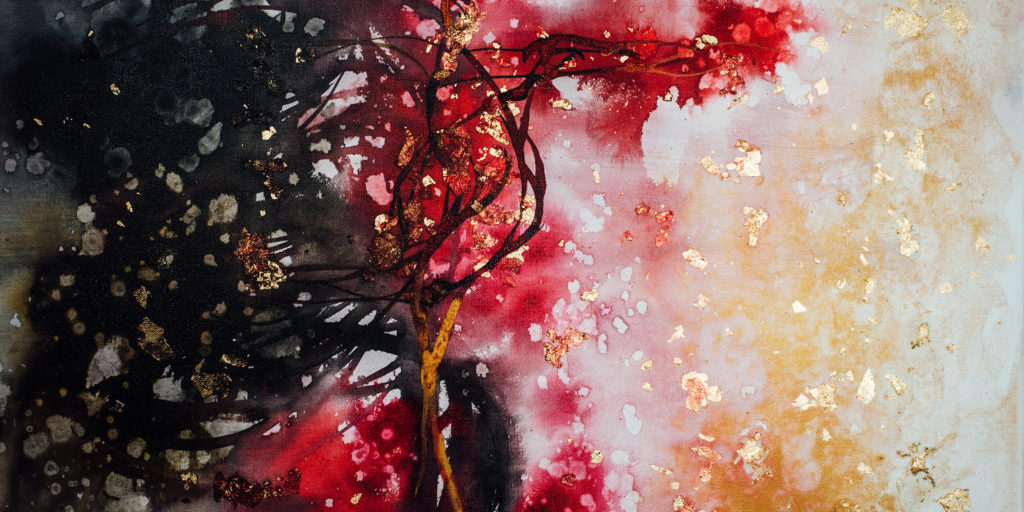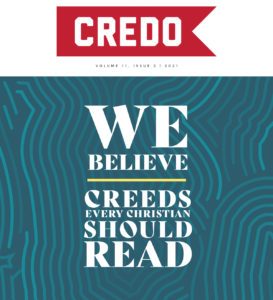
A Tour Guide of Maximus the Confessor: An Interview with Paul E. Blowers
T he new issue of Credo Magazine focuses on the creeds of the Christian Faith. The following is an excerpt from one of the issue’s featured interviews with Paul M. Blowers conducted by Zach Hollifield. Dr. Blowers is the Dean E. Walker Professor of Church History at Emmanuel Christian Seminary. He is a scholar of patristics and early Christianity and has also written on the Stone-Campbell heritage.
he new issue of Credo Magazine focuses on the creeds of the Christian Faith. The following is an excerpt from one of the issue’s featured interviews with Paul M. Blowers conducted by Zach Hollifield. Dr. Blowers is the Dean E. Walker Professor of Church History at Emmanuel Christian Seminary. He is a scholar of patristics and early Christianity and has also written on the Stone-Campbell heritage.
You have written numerous books and articles on Maximus the Confessor as well as translated with Robert Louis Wilken, On the Cosmic Mystery of Jesus Christ for the St. Vladimir’s Press’s Popular Patristic Series. Where did your interest in Maximus begin and why did you feel this sort of particular work on Maximus was necessary?
My interest in Maximus began in seminary, when I became increasingly interested in Eastern (and Eastern Orthodox) Christianity precisely because I knew so little about it. I read a lot in the Greek and Byzantine Church Fathers, as well as in late Roman imperial history, and it ignited in me a desire to study early Christianity at an advanced level. When I did my doctoral work at Notre Dame, I was bound and determined to write on Maximus, who is in some respects the “Thomas Aquinas” of the East, his only competition in that respect being John of Damascus a century later. Maximus provided a magnificent and original synthesis of the Greek patristic theological tradition, while adding his own unique perspectives. I was drawn especially to the fact that Maximus’s theology revolves around his highly-developed Christology. Christology is the connecting tissue of his views on creation, human nature, salvation and deification, the Church, the spiritual life, eschatology, and much more.Maximus provided a magnificent and original synthesis of the Greek patristic theological tradition, while adding his own unique perspectives. Click To Tweet
I’m sure you’ve had students in the classroom who are less than enthusiastic to read patristic sources or see the importance of them; while your book is itself a testament to why one should, for those who are unfamiliar with or even hesitant to read the patristics, what encouragement would/do you offer them?
The “draw” of patristic writers, in my estimation, is first and foremost their unwavering devotion to the principle that theology is biblical interpretation, a relentless search for the breadth and depth of the scriptural revelation, centered especially on the great mysteries of the Holy Trinity and the incarnation (and death and resurrection) of Jesus Christ. Furthermore, many patristic authors, even in their most sophisticated and highly technical discussions of theology, consistently retained a deep pastoral interest, a sense that the treasures of Scripture have to do with Christian life in its concreteness, and the vocation of all Christians to grow in the knowledge and love of God. There is not much space between theology and “spirituality” in patristic literature. These writers write for the church, not for academic guilds (although many of them thoroughly respected the traditions of the philosophical schools). I’ve found that some writers are naturally more compelling reading for seminary students than others. Students are drawn to early Christian theologians who have an eye on the “big picture” (e.g. Irenaeus, Tertullian, Origen, Athanasius, the Cappadocian Fathers, Augustine, Maximus the Confessor) and on those who are particularly spiritual edifying for formation in ministry (esp. monastic authors like John Cassian, Ps-Macarius, Diadochus of Photiki, and others).
You write, “For Maximus, the Christian Gospel gave witness to a universe being transfigured, to an emerging cosmic and eschatological politeia embracing all of spiritual and material creation, of which Jesus Christ was both the pioneer and the perfecter in his incarnation.” And you close the book by saying that it is Maximus’ “Christocentric cosmic gospel” which is his legacy to the universal church. As I was reading I couldn’t help but think that Maximus’ cosmic rendering of the gospel carries tremendous import for contemporary evangelical squabbles over the “personal” vs “cosmic” nature of the gospel. If that is a right read, would you flesh out how Maximus’ rendering of the gospel could bring much-needed clarity to such debates?
You’re citing here my Maximus the Confessor: Jesus Christ and the Transfiguration of the World (Oxford University Press, 2016), but I’ve written on this in a number of articles on him too. Maximus’s Christocentric cosmology is one in which God has graced all creatures not only with existence itself, but with a “natural” freedom predisposed toward fulfilling the divine purposes for each and every being. Our freedom as individuals or persons is relative to our vocation of communion with all other creatures, not just fellow human beings but ALL creatures. For human beings, Christ has modeled the perfection of human nature through love and virtue, and yet the Logos (Word) of God indwells all created beings and in his providence he is calling us to a new relation, a new creation, in which each creature enjoys the fulfilment of God’s vision for it. The eschatological perfection and transfiguration of creation would be a condition in which all creation is the ekklesia, the cosmic church, performing its “cosmic liturgy” of praise in a common Christocentric identity that defies boundaries of race, nation, etc., but that also includes other created beings who testify to the majesty of the triune Creator. Maximus follows the consensus of patristic tradition that creation is destined not toward destruction but toward renewal and transformation. It’s a very hopeful vision of the future, although it is one sobered by Christian realism regarding the catastrophe of sin and the insemination of moral evil (and consequent death) in the world. Maximus’s vision of the cosmos and its future is still projected through the lens of the passion, death, and resurrection of Christ.There is not much space between theology and “spirituality” in patristic literature. Click To Tweet
Maximus’ “Cosmic Christology” emphasizes the reality of Christ’s “Flesh redeeming the world.” In Maximus’ mind, what does giving appropriate weight to Christ’s human nature “do” for the Christian? In other words, why does it matter that Christ’s flesh redeemed the world and not simply his divinity?
The continuity between divine creation and incarnation was well-established in Greek patristic theology long before Maximus came along. But he knew the (by his time) longstanding debates over the person of Christ, which took yet another turn in his own time in the mid-seventh century. Though he was altogether knowledgeable of the development of the Christological controversies, he refused to lose sight of a crucial insight of some of his early forbears like Irenaeus (2nd century) and Athanasius (4th century), that “flesh saves flesh.” Redemption was an “inside job,” a remediation of the degeneration of humanity under the weight of “the flesh” precisely by renewing and restoring and transforming the flesh—the “flesh” often being a byword for the whole condition of human materiality and corporeality (embodiment). The New Adam cured the Old Adam precisely by bringing a rejuvenating grace to “the flesh” in all its aspects, even our passible or affective (emotional) life, our sexual being, our whole sensate being. “What is not assumed is not healed,” wrote Gregory of Nazianzus, one of Maximus’s theological heroes. The incarnation of the Son is a “deep” incarnation: Christ was “tempted in every way like us save without sin” (Heb. 4:15). He was “passible” but not “peccable,” knowing life in the flesh but not the capacity to sin. Maximus went so far as to say that the Son created his own uniquely deified human nature in the incarnation, in order that we too, by participation, could be deified. A wonderful read here is Adam Cooper’s book, The Body in St. Maximus the Confessor: Holy Flesh, Wholly Deified (Oxford University Press, 2005).
*Read the remainder of the interview here.


